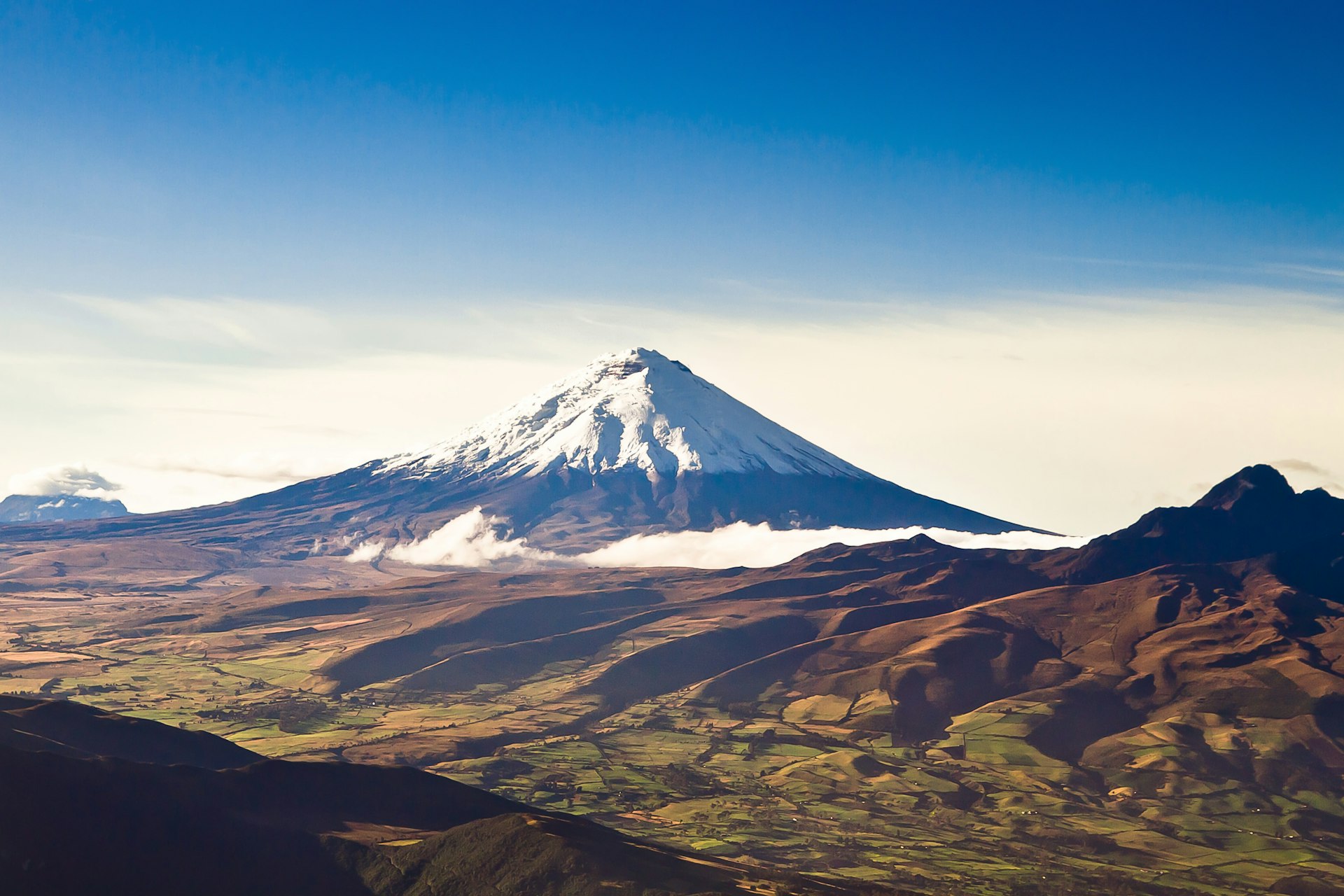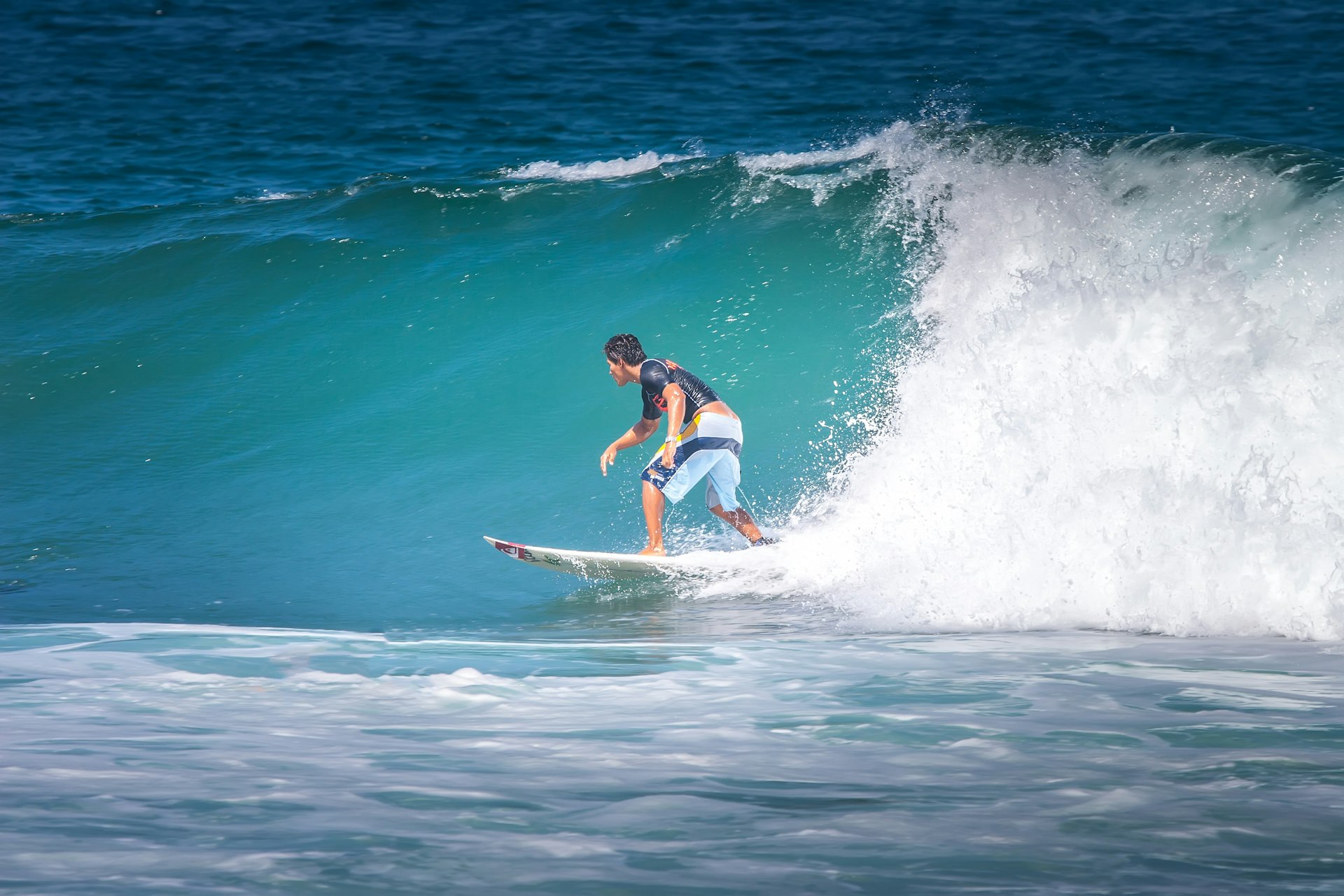Perched on the shoulder of South America, Ecuador is a patchwork of dramatic landscapes, from white sandy beaches and rolling grasslands to dense rainforests and majestic mountains. Despite its modest size, the country packs a mighty punch thanks to its breathtaking terrain, which takes in the Amazon, the Andes and the awesome archipelago of the Galápagos.
And Ecuador’s small scale lends itself perfectly to exploring by road, with epic scenery guaranteed on any road trip across the mountains, along the coast or into the more accessible parts of the Amazon (though some regions can only be explored by boat).
Thanks to big road improvements in recent years, the country has become much safer and more accessible for drivers, though there are still plenty of gravel roads that justify renting a 4WD. Here are the five best routes for a road trip in Ecuador.
1. Avenue of the Volcanoes
Best road trip for volcano-spotting
Quito–Guayaquil; 840km (520 miles); 7 days
Starting in Quito, Ecuador’s capital, this road trip takes you south down and across the spine of the Andes, following the volcano-lined corridor that was memorably dubbed “The Avenue of the Volcanoes” by German naturalist Alexander von Humboldt in 1812. Start by heading down highway E30, taking a slight detour west to view the volcano and crater lake at Quilotoa before continuing south to the thermal spa town of Baños.
From there, the route meanders southward on the E35 to Alausí, where you can stretch your legs along its charming cobbled streets lined with picturesque old buildings. To wrap things up, hop back into your car and head toward pretty, historic Cuenca before tacking west to reach your final destination – Guayaquil, Ecuador’s most populous city.
2. The Spondylus Route
Best road trip for exploring the coast
Esmeraldas–Huaquillas; 850km (530 miles); 7 days
Taking in the vast majority of Ecuador’s beautiful coastline, the Spondylus Route runs the length of the country, from Esmeraldas in the north to Huaquillas on the border with Peru. Named after the oyster-like shell used as a currency in Pre-Columbian times, the route features narrow roads that wind their way through small ports, beach-fringed surf resorts and tropical forests.
Running alongside some of the best surf beaches on South America’s Pacific coast, the route is a firm favorite for fans of surfing, scuba diving, fishing and water sports. Explore the white sandy beaches of Cojimíes, a hub for mangrove and fishing trips, or stop off further down at the surfers’ paradise of Montañita. With so much to see on route, it’s best to leave plenty of time (ideally a week or more) to take in all the Ecuadorian coast has to offer.

3. The back roads of the Andes
Best road trip for seeing central Ecuador
Quito–Quito; 530km (330 miles); 5 days
Winding south through central Ecuador, routes E35 and E45 run parallel to the spine of the Andes, offering easy access to the center of the country. This rewarding loop takes in some of the country’s best cities, towns and landscapes as it cuts through the eastern foothills and valleys of central Ecuador.
Starting in Quito, high in the Andean foothills, this itinerary starts by trundling south on route E35. As you cut through Santa Rita, you’ll pass by the Parque Nacional Cotopaxi, dominated by the active, snow-capped cone of Volcán Cotopaxi (which can be climbed) and the vast and scenic Laguna Limpiopungo.
From there, it’s on to the city of Baños, named for its mineral-rich hot springs, before you cut through Puyo and swing onto route E45. From here, the route loops back up towards Quito. Enjoy spectacular scenery and sweeping bends as the road carves its way through the Andes’ foothills to reach your starting point.

4. Quito to Laguna Quilotoa
Best one-day road trip
Quito–Laguna Quilotoa; 110 miles (180km); one day
This route takes drivers from Quito to the crater lake inside the Quilotoa volcano, which is best explored by foot once you arrive. Heading south from the capital on route E35, the route veers off on the E30 before snaking its way up toward the volcano. Expect stunning views over the surrounding hills and valleys on the way as you approach the caldera.
From the E30, the route up the volcano is well marked; you’ll cut through open countryside and fields as you make your way towards Quilotoa. At the end of the road, a collection of hostels and restaurants marks the beginning of the path around the rim of the volcano and down to the shores of the blue-green crater lake at the bottom.

5. Southern Ecuador
Best off-the-beaten-track road trip
Cuenca–Guayaquil; 840km (520 miles); 7 days
While southern Ecuador is less traveled than other parts of the country, a road trip here will take you through historic highland towns and mountain ranges, avoiding the crowds. Starting in the historic inland city of Cuenca, this route takes in the best of southern Ecuador before it connects back to the coast, where those wanting more can join the Spondylus Route.
Starting from cultured Cuenca, head down the E35 as it twists its way through the Andes to the city of Loja – a great place to break the journey for a day or two to enjoy the cooler climate and explore the surrounding hills.
From there, take a slight detour to see the cloud forests of Podocarpus National Park and head west to the off-the-beaten-track town of Zaruma, known for its quality hill-grown coffee. Another detour south leads to the largest petrified forest in South America at Puyango. From here, turn north to reach Machala and eventually Guayaquil, where the route finishes by the Río Guayas, within easy striking distance of the beaches of the central coast.
